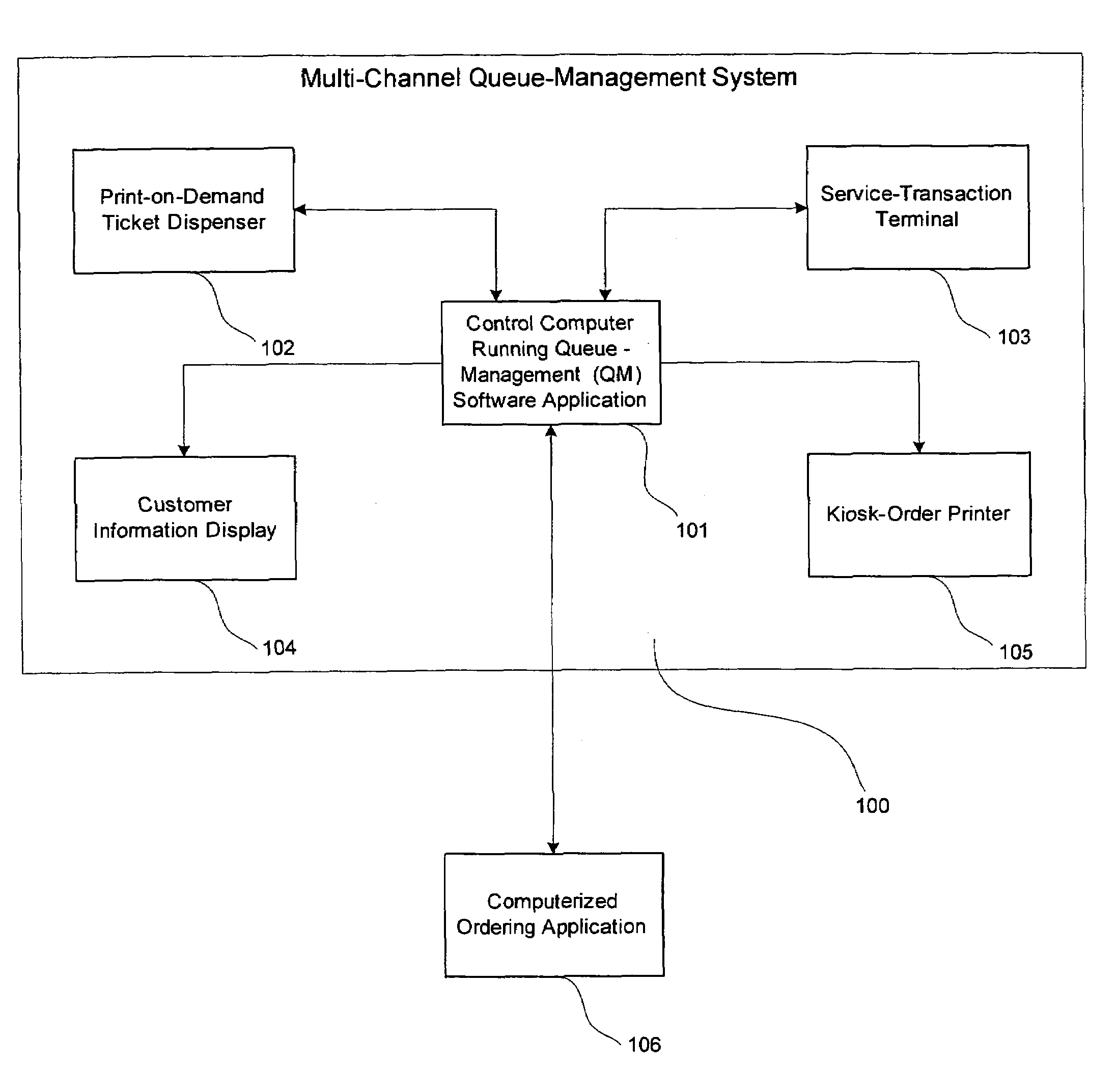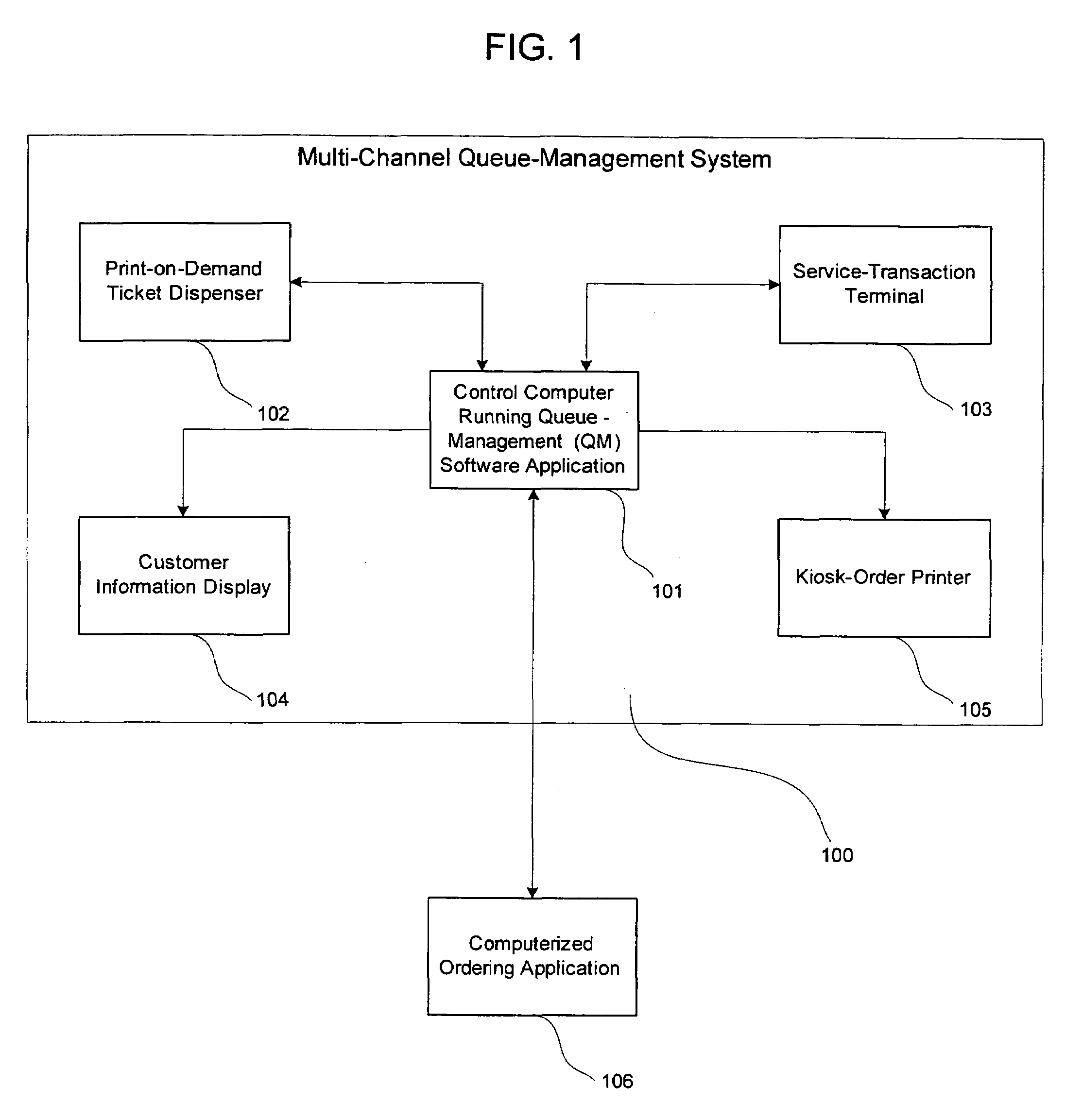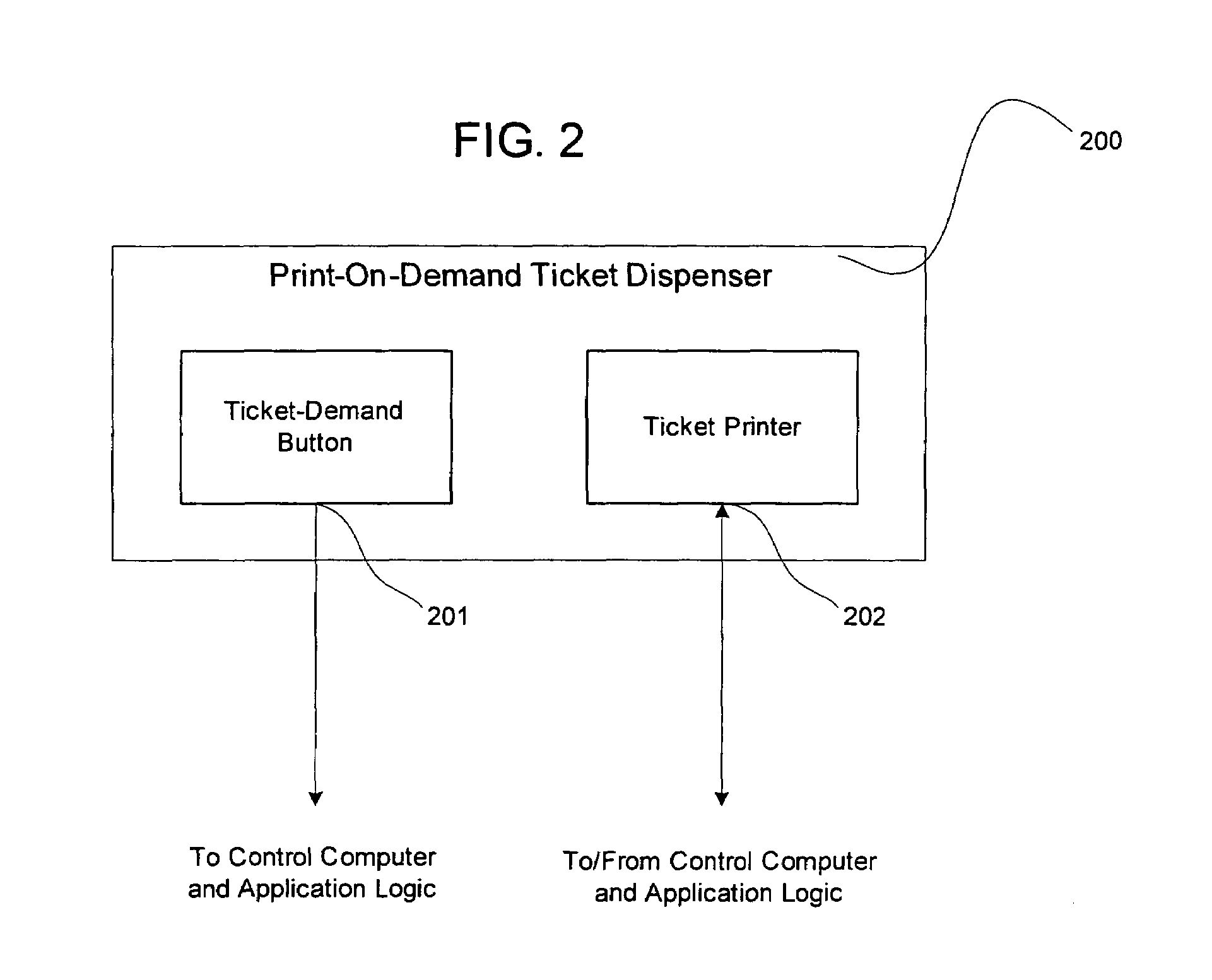Service-queue-management and production-management system and method
a technology of production management system and service-queue management, applied in the field of service-queue management and production-management system and method, can solve the problems of reducing profits, complex management of customer-service levels using queue-management and customer-ordering system, and lack of service-level performance information, especially in real tim
- Summary
- Abstract
- Description
- Claims
- Application Information
AI Technical Summary
Benefits of technology
Problems solved by technology
Method used
Image
Examples
embodiment
Non-RFID Embodiment
[0054]The embodiment shown in FIG. 5 includes a control microcomputer (502) with a display (503) and touch-sensitive screen overlay (501), a combination commonly known as a touch-screen (500). With this embodiment, service personnel use the touch-screen interface to log into and out of the server pool and to identify themselves with each transaction. As depicted in FIG. 6, the “Main Screen” (600) displayed on the Terminal (500) will contain the following graphical action objects:[0055]An identification object (604) assigned to each service person logged into the system, with either the person's name (named-ID mode) or with some anonymous form of graphical differentiation (anonymous-ID mode). These objects (604) are used to identify the server conducting each transaction. Except for New-Server-Login (605), all transactions require the service person to first touch his / her individual ID object (604), and then one of three Service Transaction buttons.[0056]A “New-Ser...
PUM
 Login to View More
Login to View More Abstract
Description
Claims
Application Information
 Login to View More
Login to View More - R&D
- Intellectual Property
- Life Sciences
- Materials
- Tech Scout
- Unparalleled Data Quality
- Higher Quality Content
- 60% Fewer Hallucinations
Browse by: Latest US Patents, China's latest patents, Technical Efficacy Thesaurus, Application Domain, Technology Topic, Popular Technical Reports.
© 2025 PatSnap. All rights reserved.Legal|Privacy policy|Modern Slavery Act Transparency Statement|Sitemap|About US| Contact US: help@patsnap.com



